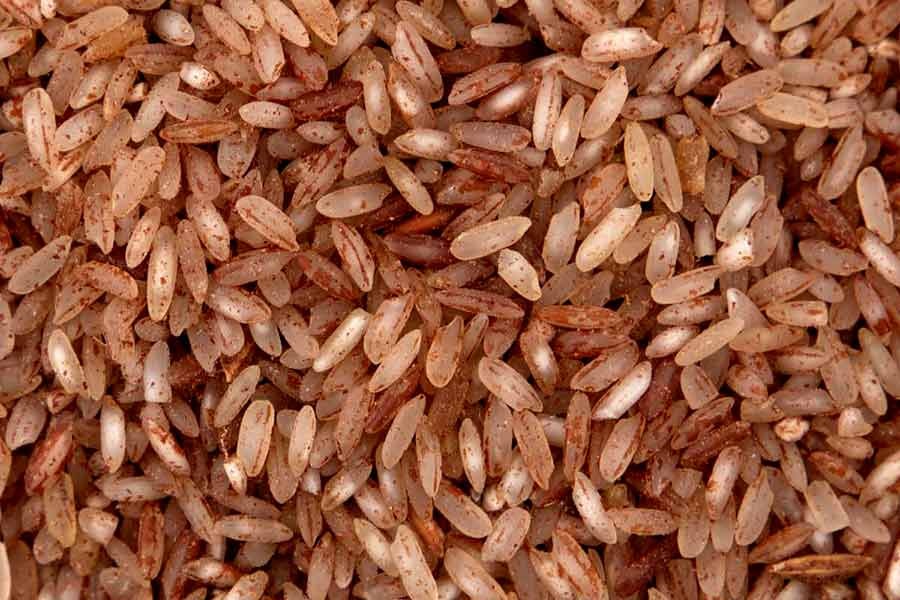For centuries, rice has been a staple in Bangladesh and in many Asian countries. Traditional husking system has been gradually replaced by polishing resulting in white rice. Consequently, use of brown rice has been confined to only a small fraction of even the rural people. Use of brown rice is being recently promoted due to its wide spectrum of nutrigenomic implications such as anti-diabetic, anti-cholesterol, cardio-protective and antioxidant whereas polished white rice lacks such benefits. Similar differences apply to brown and whole grain wheat. Despite the better nutrient contents of brown rice and its contribution to better health, people prefer white polished rice as they look better, clean and fresh and, consequently, the brown rice's market has gradually shrunk.
Brown rice/cereals have recently been promoted by the public health nutritionist considering it higher nutrigenomic properties. Brown rice contains useful nutrients such as selenium, calcium, manganese, and magnesium that are removed in the polishing of rice to make that white. Moreover, brown rice is a rich source of fiber and folate with their health benefits including prevention of constipation and promoting healthier heart. For example, one cup of cooked brown rice contains 4g of fiber and 5g of protein, while the same amount of cooked white contains only 1g of fiber and 4g of protein. Recent research has disclosed that brown rice could reduce the risk of diabetes.
Although rice is a staple food for the majority of the world's population, it could contain a deadly carcinogenic material, arsenic, a natural element that can be found in rocks and soil, water, air, and in plants and animals. Given the higher dietetic benefits, several studies have reported that high arsenic levels are more common in brown rice than one might imagine compared to other plants. Arsenic mainly deposited in the husk of rice grain. And brown rice contains husk. Long-term consumption of inorganic arsenic can lead to health problems in adults such as cancers of internal organs and heart disease, while children may suffer from nerve damage and impaired intellectual functions. Given the higher benefits though with higher health hazards of brown rice, it is time for families who consumes rice to reduce rice consumption and choose other available foods.
Arsenic is a toxic environmental pollutant that occurs naturally in soil and groundwater. It is also found in industrial processes and present in pesticides. Although most of the arsenic-containing pesticides are currently banned, some amount of the arsenic used decades ago is still present in soil today, and additionally, some industries continue to deposit arsenic into the soil and groundwater that ends up in our food supply. Unfortunately, the climate change may worsen the problem. A new study suggests that arsenic uptake by rice plants will increase under higher temperatures. Bangladesh is in high risk of climate change and, therefore, it warrants public health attention. Compared to other grains, rice plants more readily uptake arsenic from soil and water that remains in our rice diets as well in rice flour and honey-like sweetener known as brown rice syrup. Such products are often used by the food manufacturers in making crackers, baked goods, breakfast cereals and rice-based baby foods. However, the greater issue is the intake of rice by infants and children, who experience arsenic exposure that are up to three times that of the adults. Nearly a hundred and eight countries in the world are affected by arsenic contaminated groundwater. Over 230 million people, including 180 million in Asia, are at risk of exposure to arsenic. More than 90 per cent of arsenic pollution is considered geogenic. Additionally, global warming may result in many serious alterations to the environment, including exposure to arsenic, adversely impacting human health.
One needs to think seriously before having brown rice on our plate. It is understandable that changing/modification of staple food is complex and a difficult choice and may take several years to see a little change.
Mahfuzar Rahman, Bangladesh Representative, Pure Earth
He can be reached at [email protected]


